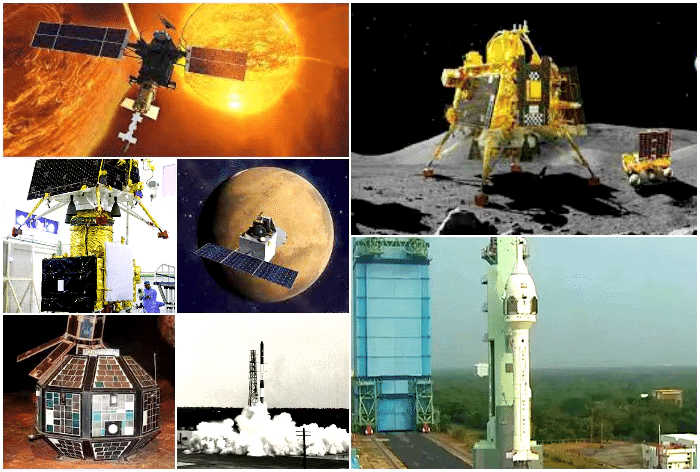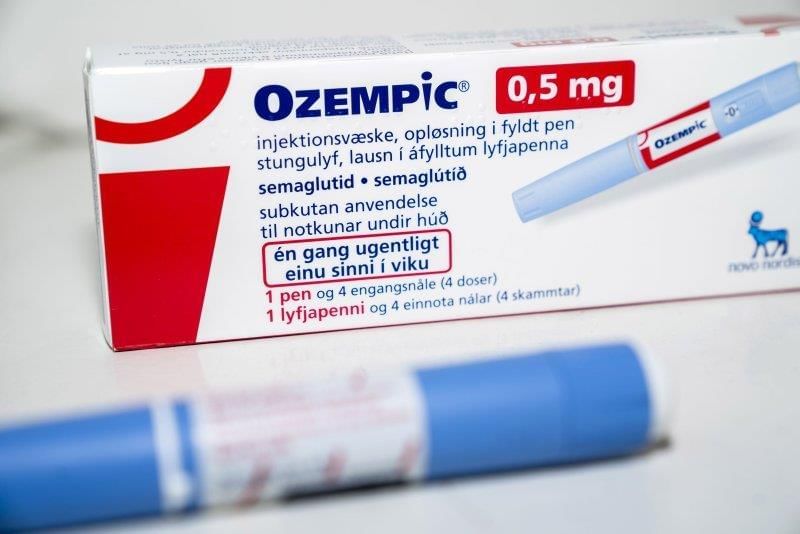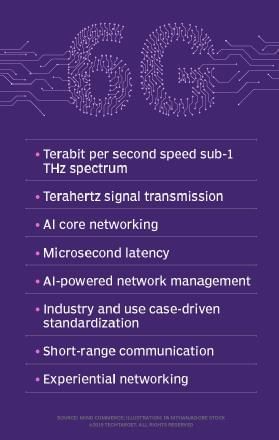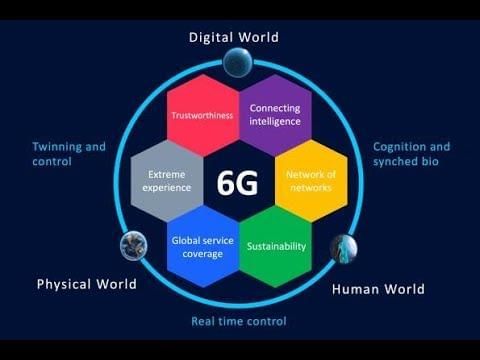Science and Technology: May 2025 UPSC Current Affairs | Science & Technology for UPSC CSE PDF Download
Evolution of India's Space Program

Why in News?
The Global Space Exploration Summit (GLEX) 2025 is being held in New Delhi under the theme “Reaching New Worlds: A Space Exploration Renaissance.” The Prime Minister emphasized that India’s space programme transcends scientific discovery, acting as a tool for empowering citizens and fostering economic and social development. Concurrently, the European Space Agency (ESA) has expressed its openness to collaboration with India on broad and uncharted realms of space exploration.
Key Takeaways
- India’s space program has evolved significantly since its inception in the 1960s.
- Major milestones include the successful Chandrayaan and Mangalyaan missions.
- Current challenges include budget constraints, import dependencies, and geopolitical competition.
Additional Details
- Humble Beginnings (1960s–1970s): The first sounding rocket, a US-made Nike-Apache, was launched in 1963 from Thumba, Kerala, focusing on basic atmospheric studies and establishing foundational infrastructure.
- Building Indigenous Capabilities (1980s–1990s): Development of the Satellite Launch Vehicle (SLV), INSAT series for communication and weather monitoring, and IRS for agriculture, water management, and disaster response were key achievements during this period.
- Entering the Global Arena (2000s–2010s): India launched Chandrayaan-1 in 2008, which was successful in discovering water molecules on the Moon. The Mangalyaan mission in 2014 made India the first country to reach Mars on its first attempt.
- Future Ambitions (2020s–2040s): Development of the Gaganyaan mission to send Indian astronauts into space and plans for establishing the Bharatiya Antariksh Station by 2035 are among the future goals.
- Economic Impact: ISRO's satellite data aids in various public service schemes, enhances agricultural productivity, and supports disaster management through timely data on climatic changes.
- Key Challenges: India’s space budget is only 0.04% of GDP, leading to limitations in funding significant projects and technology development.
India's space program has progressed from its humble beginnings to becoming a global player in space exploration. Despite facing challenges such as budget constraints, import dependencies, and geopolitical competition, India continues to strive for advancements in indigenous technology and international collaboration to enhance its space capabilities.
Semaglutide for Fatty Liver Treatment

Why in News?
A recent study has revealed that semaglutide, a medication commonly used for weight loss and diabetes (found in brands like Ozempic and Wegovy), is also effective in treating fatty liver disease, specifically known as Metabolic Dysfunction Associated Steatohepatitis (MASH).
Key Takeaways
- Semaglutide: A GLP-1 receptor agonist effective in managing type 2 diabetes and obesity.
- Fatty Liver Disease: Characterized by excess fat accumulation in liver cells, impacting liver function.
- NAFLD: Non-Alcoholic Fatty Liver Disease is prevalent and can lead to serious liver complications.
- Treatment Options: Focus on weight loss and medications to manage liver fat.
Additional Details
- What is Semaglutide? Semaglutide is a glucagon-like peptide-1 (GLP-1) receptor agonist that helps lower blood sugar by increasing insulin secretion, inhibiting glucagon release, and delaying gastric emptying.
- Side Effects: Common side effects include nausea, vomiting, diarrhea, constipation, and abdominal discomfort. It is contraindicated for individuals with a history of medullary thyroid cancer or Multiple Endocrine Neoplasia type 2.
- Non-Alcoholic Fatty Liver Disease (NAFLD): This condition involves fat accumulation in the liver without excessive alcohol intake, potentially leading to serious liver damage.
- Stages of MASLD:
- NAFL: Fat buildup without liver damage.
- NASH/MASH: Inflammation and scarring of the liver, with potential progression to cirrhosis or liver cancer.
- Fibrosis: Scar tissue formation affecting liver function.
- Cirrhosis: Severe stage with permanent liver scarring and risk of liver failure.
- Treatment for Fatty Liver Disease: The primary treatment involves weight loss through lifestyle changes or medication. Options include GLP-1 receptor agonists, Resmetirom (a costly thyroid hormone-based drug), FGF21 drugs, and Tirzepatide (a dual-action medication).
- Overall, semaglutide shows promise in addressing fatty liver disease, particularly in patients struggling with obesity and diabetes. Further research may solidify its role in liver health management.
Antibiotic Resistance in India: A Study Overview

Why in News?
A recent study published in The Lancet Infectious Diseases highlighted significant challenges in treating drug-resistant infections in India, revealing that only 7.8% of patients received appropriate antibiotics for carbapenem-resistant Gram-negative (CRGN) infections. This figure is slightly higher than the average of 6.9% across eight low- and middle-income countries (LMICs), emphasizing a critical healthcare issue.
Key Takeaways
- The study analyzed 1.5 million cases of CRGN infections across India, Bangladesh, Brazil, Egypt, Kenya, Mexico, Pakistan, and South Africa.
- In India, nearly 10 lakh CRGN infections were recorded in 2019, but fewer than 1 lakh patients received the necessary treatment.
- Approximately 3.5 lakh deaths in India are attributed to inadequate treatment of these infections.
Additional Details
- Carbapenem-resistant Gram-negative (CRGN) Infections: These infections are caused by bacteria resistant to carbapenems, considered last-resort antibiotics. Treatment options are limited to newer generation antibiotics such as ceftazidime-avibactam, colistin, tigecycline, and fosfomycin.
- Barriers to Treatment: Factors contributing to low treatment rates include irrational overuse of high-end antibiotics and limited access for patients who genuinely need them.
- Global Initiatives: The WHO's Novel Medicines Platform (NMP) launched in April 2024 aims to improve sustainable access to antibiotics and innovate new treatments.
Natural Hydrogen

Why in News?
Natural hydrogen is emerging as a promising clean, plentiful, and cost-effective energy source, attracting increasing global interest as a potential cornerstone in the shift toward green energy.
What are Key Facts About Natural Hydrogen?
- About: Also known as geologic or white hydrogen, natural hydrogen refers to hydrogen gas (H₂) that forms and accumulates naturally within the Earth's crust.
- Unlike hydrogen produced through industrial processes (from fossil fuels or renewables), this type originates from natural geological activity, offering hope for a breakthrough in sustainable energy.
- Formation: Natural hydrogen is found underground and is generated through various natural geological mechanisms such as:
- Serpentinisation: A chemical reaction between water and iron-rich rocks.
- Radiolysis: The breakdown of water molecules by radioactive minerals.
- Organic Decomposition: The transformation of buried organic materials deep within the Earth.
- Discovery: In 1987, a borehole in Bourakébougou, Mali, emitted an unusual flame. By 2012, it was confirmed to contain hydrogen with 98% purity. Significant finds in France’s Lorraine and Moselle regions uncovered 92 million tonnes of hydrogen—equivalent to half of the world’s current annual hydrogen production.
- Major Reserves: Hydrogen seeps have been identified in over 10 countries, including Australia, the USA, France, South Korea, Canada, and Spain.
India’s Natural Hydrogen Potential
India's unique geological formations position it as a favorable region for natural hydrogen discovery:
- Ultramafic and mafic rock formations, ophiolite belts, and greenstone terrains.
- Sedimentary basins in regions such as Vindhyan, Cuddapah, Gondwana, and Chhattisgarh.
- Presence of hydrothermal systems and hot springs, indicating possible subsurface hydrogen activity.
- Potential Impact: Even if just 2% of the Earth's natural hydrogen can be extracted, it could supply twice the energy content of all existing natural gas reserves and fulfill global hydrogen requirements for the next two centuries.
- Cost Efficiency: The projected production cost of natural hydrogen is around USD 1 per kilogram—making it more economical than both green and grey hydrogen.
- A worldwide surge in exploration is underway, with the number of companies investigating natural hydrogen increasing from 10 in 2020 to 40 in 2023.
The Dawn of Autonomous Satellites and the Legal Vacuum Above Us

Why in News?
This article discusses the emergence of AI-powered autonomous satellites, highlighting their operational capabilities and the legal challenges they pose in space governance.
Key Takeaways
- Autonomous satellites utilize Artificial Intelligence (AI) to operate with minimal human oversight.
- They employ satellite edge computing to analyze data and make decisions autonomously.
- AI in satellites presents significant risks, including misinterpretation of data and geopolitical conflicts.
- Existing space laws are inadequate in addressing the complexities introduced by AI autonomy.
Additional Details
- Autonomous Satellites: These satellites are advanced machines capable of performing tasks such as docking, inspections, debris removal, and in-orbit refueling without human intervention.
- Key Applications:
- Automated Operations: Includes tasks such as docking and debris management.
- Self-Diagnosis & Repair: Ability to detect and rectify faults autonomously.
- Route Optimization: Adjusting orbits to conserve fuel and avoid collisions.
- Geospatial Intelligence: Assisting in disaster management and real-time coordination with other satellites.
- Combat Support: Providing assistance in military operations through autonomous tracking.
- Risks of AI in Space:
- AI “Hallucinations”: AI systems may misinterpret objects, leading to potentially dangerous decisions.
- Geopolitical Consequences: Misinterpretation of routine activities could escalate to international disputes.
- Legal Complexity: Ambiguity in liability for collisions caused by AI satellites complicates accountability.
- Ethical and Geopolitical Concerns:
- Risk of weaponization, with AI satellites potentially being used as autonomous weapons systems.
- Data privacy risks due to vast data collection capabilities of satellites.
- Legal & Governance Challenges: Current space treaties, such as the Outer Space Treaty (1967) and the Liability Convention (1972), do not adequately address the implications of AI autonomy in satellite operations.
- Legal and Technical Solutions:
- Defining Autonomy Levels: Classifying satellites based on their level of autonomy to enforce stricter regulations.
- Human Oversight: Ensuring human control to mitigate unintended actions by autonomous satellites.
- Adversarial Testing: Conducting tests to evaluate AI systems' responses to unexpected situations.
- Decision Logging: Recording key decisions made by satellites for accountability and review.
In conclusion, while autonomous satellites represent a significant advancement in space technology, they also raise critical legal, ethical, and operational challenges that must be addressed to ensure safe and responsible use of AI in space.
India’s AMR Crisis

Why in News?
The recent launch of Nafithromycin (Miqnaf) — India’s first indigenously developed antibiotic in over 30 years — represents a crucial advancement in the fight against Antimicrobial Resistance (AMR). However, the magnitude and urgency of the AMR crisis necessitate comprehensive and sustained efforts beyond this development.
Key Takeaways
- Overuse of antibiotics is a significant contributor to AMR.
- Inadequate healthcare infrastructure exacerbates the issue.
- There is a lack of new antibiotics entering the market.
- Unregulated use in agriculture and animal husbandry is rampant.
- Environmental factors play a role in spreading resistance.
Additional Details
- Overuse of Antibiotics: Improper prescriptions and excessive use of antibiotics, even for viral infections, drive resistance. In 2022, 59% of India's antibiotic consumption came from the 'Watch' group, which is intended for severe infections only.
- Inadequate Healthcare Infrastructure: A lack of diagnostic tools leads to the empirical prescription of broad-spectrum antibiotics, while overcrowded and unhygienic hospitals promote resistant bacteria.
- Lack of New Antibiotics: With no new antibiotics introduced until Nafithromycin in 2024, pharmaceutical companies focus on more profitable chronic disease drugs, neglecting antibiotic R&D.
- Environmental Factors: Pharmaceutical factories release antibiotic residues into water bodies, contaminating the environment and creating resistance hotspots.
- Economic Cost: The World Bank estimates AMR could add USD 1 trillion in healthcare costs by 2050, along with significant GDP losses.
The rise of AMR poses a serious risk to global health, leading to health catastrophes, economic burdens, and food security crises, particularly affecting poorer communities.
Measures Underway to Tackle Antimicrobial Resistance in India
- National Action Plan on AMR (2017): This plan aligns with global efforts and focuses on surveillance, rational antibiotic use, and public awareness.
- AMR Surveillance Networks: India monitors nine priority bacterial pathogens through the National Antimicrobial Surveillance Network (NARS-Net).
- Antibiotic Regulation: The government has banned 156 fixed-dose combination (FDC) drugs to combat misuse.
- Public Awareness: Campaigns like the Red Line Campaign warn against using certain antibiotics without prescriptions.
- Global Collaboration: India participates in WHO's GLASS to enhance data collection and sharing on AMR.
In conclusion, while the launch of Nafithromycin marks progress, a multifaceted and sustained approach is essential to effectively combat AMR. This includes strengthening regulations, promoting domestic antibiotic development, enhancing stewardship programs, and expanding diagnostic facilities.
Features and Working of 6G Technology

Why in News?
The advent of 6G technology is poised to transform communication, promising data transmission rates significantly surpassing those of 5G. This technology aims to harness untapped radio frequencies and cognitive technologies like AI, which could dramatically enhance connectivity and operational efficiency.
Key Takeaways:
- 6G technology is expected to operate at terahertz (THz) frequencies, enabling much faster data transfer.
- Artificial Intelligence (AI) will play a critical role in optimizing network performance.
- Massive MIMO technology will facilitate connections for a vast number of devices.
Additional Details:
- Terahertz (THz) Frequencies: Engineers are focusing on using THz waves, which can transmit data over hundreds of gigahertz, allowing for higher data capacity than 5G.
- Use of Artificial Intelligence: AI will enhance the reliability of data delivery and manage network traffic effectively.
- Massive MIMO (Multiple-Input Multiple-Output): This technology will support numerous devices and connections, crucial for the IoT ecosystem.
- 6G will feature network slicing, which allows prioritization of different types of data traffic, such as industrial automation and video streaming.
- Security: Enhanced security measures, including advanced encryption and authentication, are designed to protect sensitive data.
- Ultra-reliable low latency communication (URLLC) will address critical applications that require minimal delay.
- Sustainability: 6G aims to promote energy-efficient practices, enabling better resource management through closed-loop control.
India is actively preparing for the rollout of 6G technology, with expectations set for commercial deployment by 2030. The government is driving initiatives to bolster research and development in this field, including the establishment of a Technology Innovation Group on 6G (TIG-6G) to realize the Bharat 6G Vision.
Significance of 6G Technology
Key Takeaways:
- India has received over 127 patents related to 6G, highlighting its growing technological capabilities.
- An agreement with the US aims to enhance collaborative research in 6G technology.
Additional Details:
- Bharat 6G Vision: This initiative aims to create a secure and intelligent 6G network, enhancing connectivity for improved quality of life.
- The International Telecommunication Union (ITU) has recognized the 6G Vision Framework, underscoring India's contribution to global telecom standards.
As India prepares for the challenges associated with 6G, it is essential to consider issues such as infrastructure investment, security threats, and the complexity of technology deployment.
Challenges Related to 6G in India
Key Takeaways:
- Infrastructure investment is required to support the advanced capabilities of 6G.
- Security concerns may arise due to the high speeds and data volumes associated with 6G networks.
Additional Details:
- Complex Technology: The intricate nature of 6G technology poses development and implementation challenges.
- Low availability of bandwidth and insufficient fiber connectivity can hinder the deployment of 6G networks.
Despite these challenges, the potential applications of 6G are vast, ranging from healthcare advancements to transformative education methods, promising significant benefits for society.
Applications of 6G Technology

Key Takeaways:
- 6G will enhance healthcare services through AI-enabled ambulances and remote monitoring.
- Smart agriculture systems will utilize IoT and AI for predictive analytics.
Additional Details:
- Transportation: Urban Air Mobility (UAM) innovations, such as eVTOL aircraft, will be facilitated by 6G technology, easing urban traffic issues.
- In education, 6G will allow for interactive learning experiences through virtual connections.
- Internet of Things (IoT): The capabilities of 6G will significantly improve IoT applications, enabling real-time data sharing among numerous devices.
- Furthermore, 6G may support new space exploration applications, enhancing communication with space vehicles.
In conclusion, while the journey towards 6G implementation is fraught with challenges, the potential benefits and advancements it promises make it a critical area for investment and innovation.
ICMR Introduces First Stigma Scale for Sickle Cell Disease
Why is it News?
The Indian Council of Medical Research (ICMR) has created the ICMR-SCD Stigma Scale for India (ISSSI) to better understand and mitigate the stigma faced by patients and caregivers dealing with sickle cell disease (SCD).
Understanding Sickle Cell Disease (SCD)
- Nature of the Disease: SCD is a genetic condition where red blood cells become misshapen, resembling a sickle. This abnormal shape reduces the cells' ability to deliver oxygen throughout the body.
- Complications: The sickle-shaped cells can block blood vessels, break apart easily, and lead to anemia, damage to organs, and painful crises.
- Cause: SCD is inherited, requiring one faulty gene from each parent. If only one gene is faulty, the individual has sickle cell trait, which is usually less severe.
- Symptoms: Common symptoms of SCD include extreme tiredness (fatigue), body aches, swollen limbs, frequent infections, and damage to organs.
- Treatment Options: While there is no one-size-fits-all cure for SCD, treatments like bone marrow transplants and gene therapy show promise. Supportive care is essential for managing symptoms and improving quality of life.
Note: Anaemia involves having insufficient healthy red blood cells (RBCs) or hemoglobin in the blood. All individuals with SCD experience anaemia, but not all cases of anaemia are due to Sickle Cell Disease.
Overview of the ICMR-SCD Stigma Scale for India (ISSSI)
- Purpose: The ISSSI is the first tool in India aimed at measuring the stigma experienced by patients with sickle cell disease (SCD) and their caregivers.
- Developed by: The Indian Council of Medical Research (ICMR) created this scale to comprehend and address the social implications of SCD in India's diverse populations.
- Global Context: The ISSSI is the fourth stigma scale globally and the first to be validated for conditions specific to India.
- Scientific Validation: The scale was validated through a study published in The Lancet (Regional Health – South-East Asia).
- Availability: The ISSSI is now authorized for use in clinical and research settings throughout India.
- Components: The scale includes two versions — ISSSI-Pt for patients and ISSSI-Cg for caregivers.
- Stigma Dimensions: It addresses various aspects of stigma, including family expectations, reproductive issues, social disclosure, illness burden, interpersonal difficulties, and negative experiences in healthcare.
- Data Sources: The scale was developed using data from six culturally diverse districts: Alluri Seetharama Raju, Anuppur, Chhoteudepur, Kandhamal, Mysuru, and Udalguri.
India’s Approach: Anaemia Mukt Bharat (AMB)
- Launch Year: The AMB Mission was initiated in 2018 with the goal of reducing anaemia through a comprehensive 6x6x6 strategy.
- Target Groups: The mission focuses on six groups: young children, school children, adolescents, women of reproductive age, pregnant women, and lactating mothers.
- Key Interventions: The interventions include providing iron and folic acid supplements, deworming, nutrition education, utilizing digital health tools, promoting IFA-fortified foods, and conducting disease screenings, which include screening for SCD.
- Supporting Systems: The mission is supported by inter-ministerial coordination, state-level units, research centers, the AMB Dashboard for monitoring, digital tracking, and supply chain management.
- Reach: AMB aims to impact approximately 450 million people, emphasizing real-time monitoring and effective last-mile delivery of services.
|
90 videos|490 docs|209 tests
|
FAQs on Science and Technology: May 2025 UPSC Current Affairs - Science & Technology for UPSC CSE
| 1. What are the key milestones in the evolution of India's space program? |  |
| 2. How does Semaglutide contribute to the treatment of fatty liver disease? |  |
| 3. What are the implications of antibiotic resistance in India? |  |
| 4. What current measures are being taken to combat antibiotic resistance in India? |  |
| 5. How can the knowledge of current affairs in science and technology benefit UPSC aspirants? |  |
















